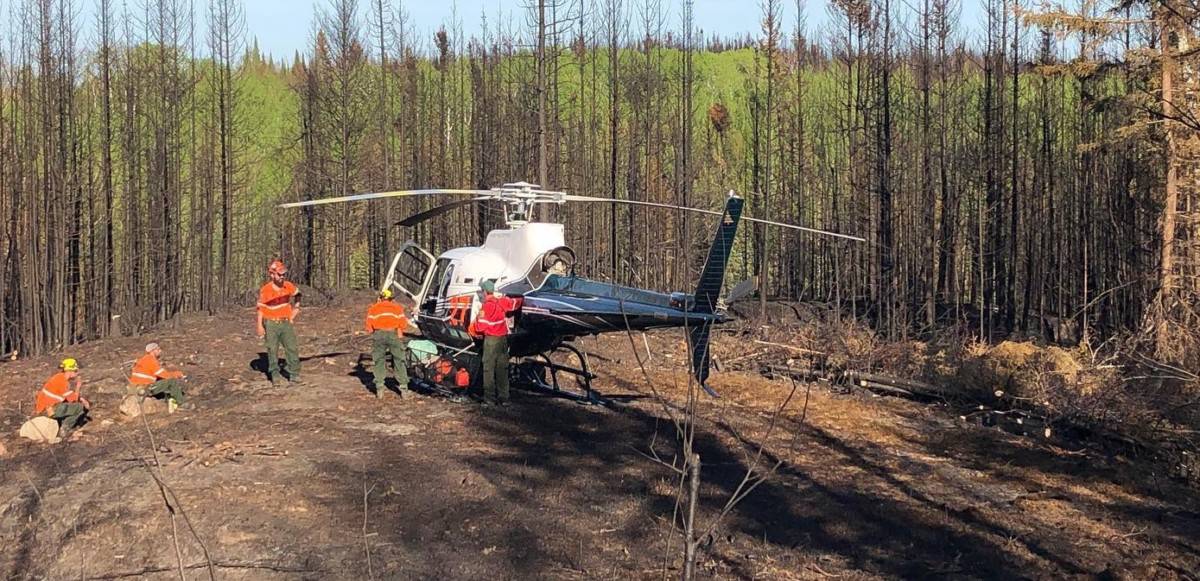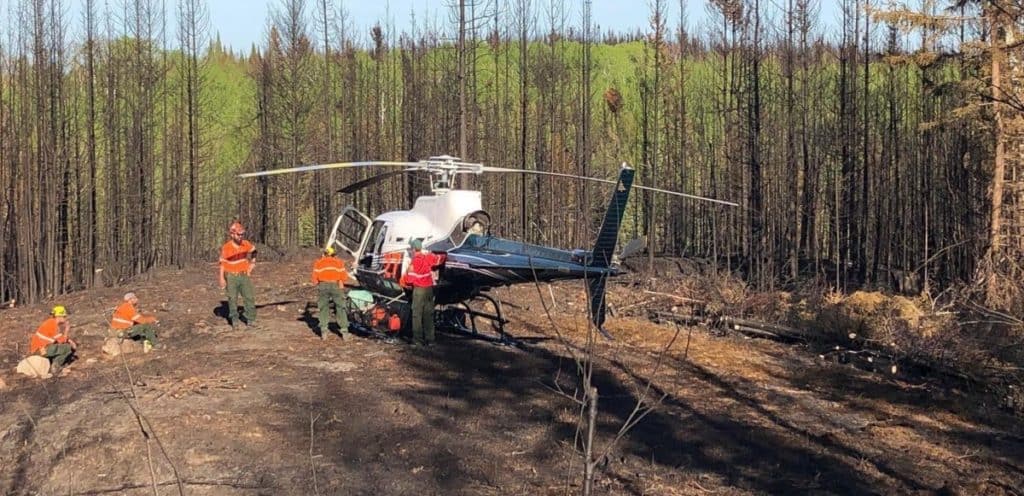
We have all seen on TV the helicopters working on wildfires to help put them out or get them under control but what other roles do helicopters have on a wildfire? Do they use them for moving firefighters? Do they use them to coordinate? or, are they just used to drop water?
On wildfires, helicopters are mostly used for water dropping, crew & gear transport, fire detection, aerial mapping or survey, and aerial ignition. Helicopters serve many roles on a wildfire and depending on the fire size, many helicopters can be used in multi-purpose roles as the tasks arise.
As I write this article I am sat at a wildfire base surrounded by smoke from adjacent wildfires. We have two helicopters here, my Airbus AS350 Astar and a Bell 212. The roles of the helicopters are different but can be utilized to do the same jobs if required by the forestry management team. I thought this would be a great time to tell you what helicopters can be used for when working with the firefighters on the ground to detect, fight, control, and hopefully extinguish a wildfire.
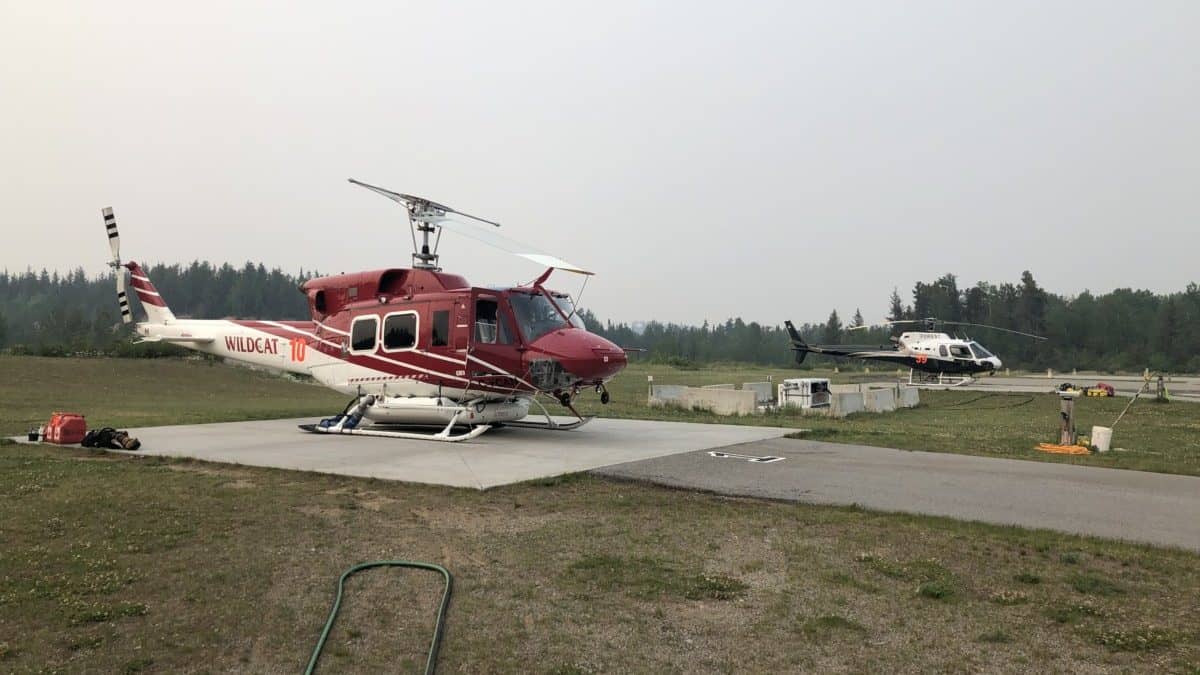
What Do Helicopters Do On Wildfires?
There are many roles that helicopters are employed to do when they are hired by the forestry service to fight a wildfire. Each country, state, region can fight a wildfire completely different from one another, and the way they utilize helicopters can vary too. These are some of the general ways that most helicopters are used to help fight wildfires:
Water Dropping
By far the most common sight on a wildfire are the helicopters dropping water. This can be accomplished by using a water bucket hooked to the belly of the helicopter, a water bucket attached to a ‘Long Line’ underneath the helicopter, or via a belly tank attached to the underside of the helicopter.
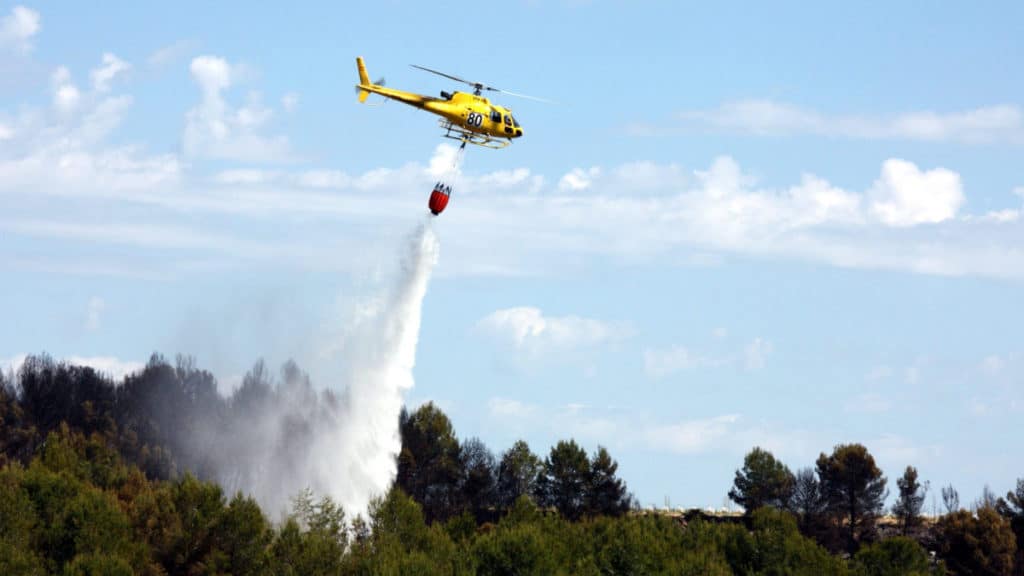
Each method has the same objective: Pick up water from a nearby source, fly it to the fire, and drop the water onto an area of open flame, burning tree, approaching line of fire, smoldering trees, or any other target the firefighters on the ground wish for you to assist.
Buckets and belly tanks are controlled by the pilot allowing the pilot to drop all the buckets’/tanks’ contents in one go or in multiple drops depending on the design of the water-dropping device.
For more information on how a water bucket works check out this video I made for you:
Helicopters can be utilized to not only drop water but can scoop out of portable reservoirs filled with fire retardants or they can insert a foam or gel solution into the bucket to help suppress the fire if requested by the forestry service. The majority of the time though, the pilots are just scooping water out of a nearby lake, pond, pool, stream, river, ocean, or portable reservoir and get it onto the fire.
Most helicopters from the size of an Astar or Bell Long Ranger and upwards are utilized to bucket on a fire. Any helicopter smaller than these just can’t carry enough weight in water to really be of any use. The smaller helicopters, like a Bell 206 Jet Ranger are used for other roles.

Join My Newsletter & Get Great Tips, Information and Experiences To Help You Become a Superb Pilot!
Crew & Gear Transport
Wildfires can be started by lightning, humans, or trains in the most inaccessible places. To be able to fight a wildfire you need crews on the ground to be able to work over the ground material, smoldering trees and hotspots while the aerial assets assist them. To be able to get those crews and their equipment out onto a fire helicopters are used to move them from the airports and fire attack bases into the area.
Some helicopters can be loaded up with a full attack crew and their gear, this is called the IA (Initial Attack) helicopter and is on an immediate launch standby. Other helicopters can be loaded with just cargo and act like a delivery truck. Once a crew is on the fire they may be called upon to cut a helipad out of the trees nearer to the fire so more helicopters can quickly move more crew and gear onto the fire if it begins to spread.
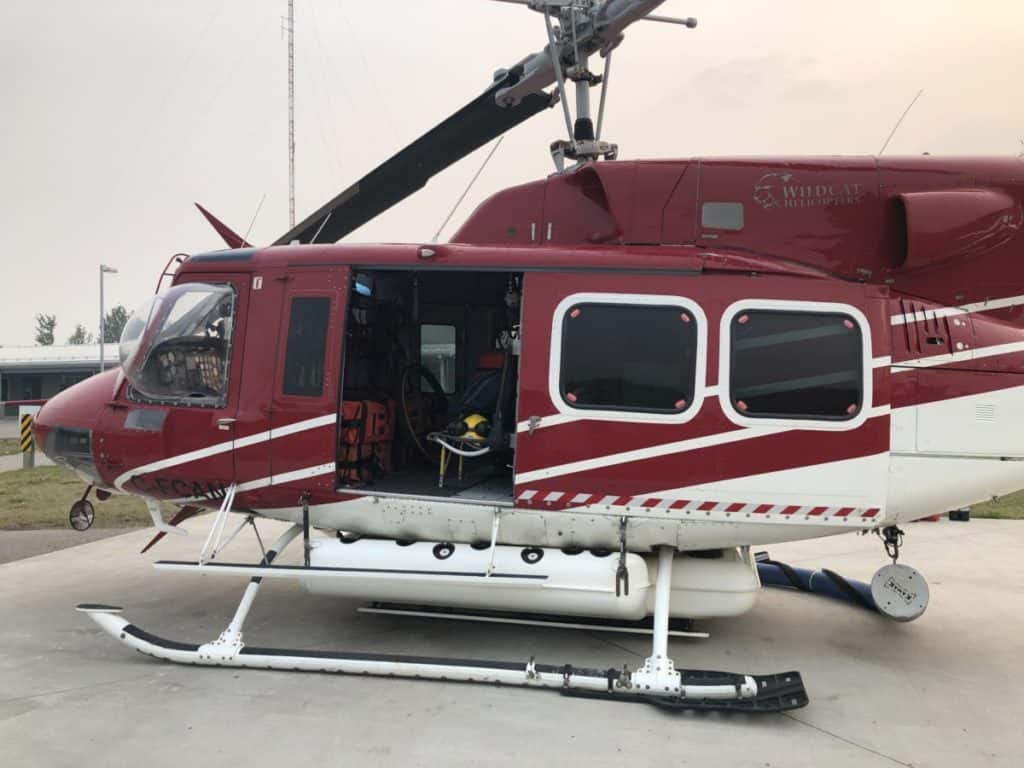
The job that my Astar currently serves is to take out water, food, hoses, pumps, spares, and pick up garbage from the fire crews’ camps around the fire. Here our fire crews camp out on the fire so my helicopter is tasked with daily resupply runs as well as any other role required.
As the crews begin to near their days off, or the fire is out the helicopters are utilized to pick up the crews and their equipment from the helipads and bring them out. The medium category helicopters like the Bell 212 are great for this as they are like a big pickup truck. Just load them up and off they fly.
Helicopters are also used to sling out net loads of equipment from staging areas to help the fire crews from carrying it all back to the helipads. Backpacks of wet hose can weigh around 80lbs each and there can be dozens and dozens of them used on the fire! Slinging is easier than carrying!
Overwatch/Bird Dog
On large fires where there are many aircraft, a smaller helicopter like the Bell 206 Jet Ranger can be used to fly an Incident Commander around. This Overwatch machine will circle high above the fire and other aircraft and command all the working helicopters in the area and sometimes the crews on the ground.
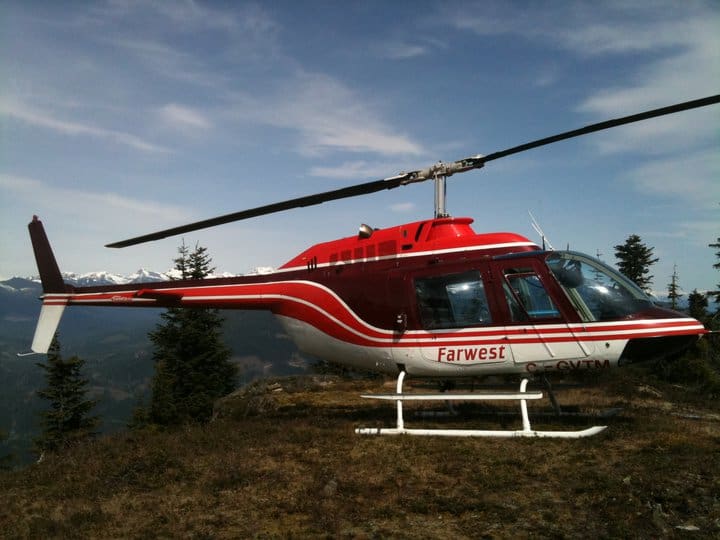
This helicopter can be referred to by many names:
- Bird Dog
- HelCo – Helicopter Coordinator
- IC – Incident Commander
- FC – Fire Commander
Essentially, they are providing some form of fire and/or airspace control. When a lot of aircraft are working in a small vicinity with reduced visibility a Bird Dog machine will usually be overhead controlling everyone. This increases safety, and just like an air traffic controller at an airport, this is the fires version of that.
When the ‘Heavy’ category of helicopters are working on a fire they may have their own Bird Dog looking after them. In this situation, the person sitting in the passenger seat of the Bird Dog helicopter will be giving directions to the heavy pilots on where they want to concentrate their drops. Because this person is able to see the fire, or area of a fire as a whole, they can work out the strategy on how to best fight it and relay that strategy to the heavies.
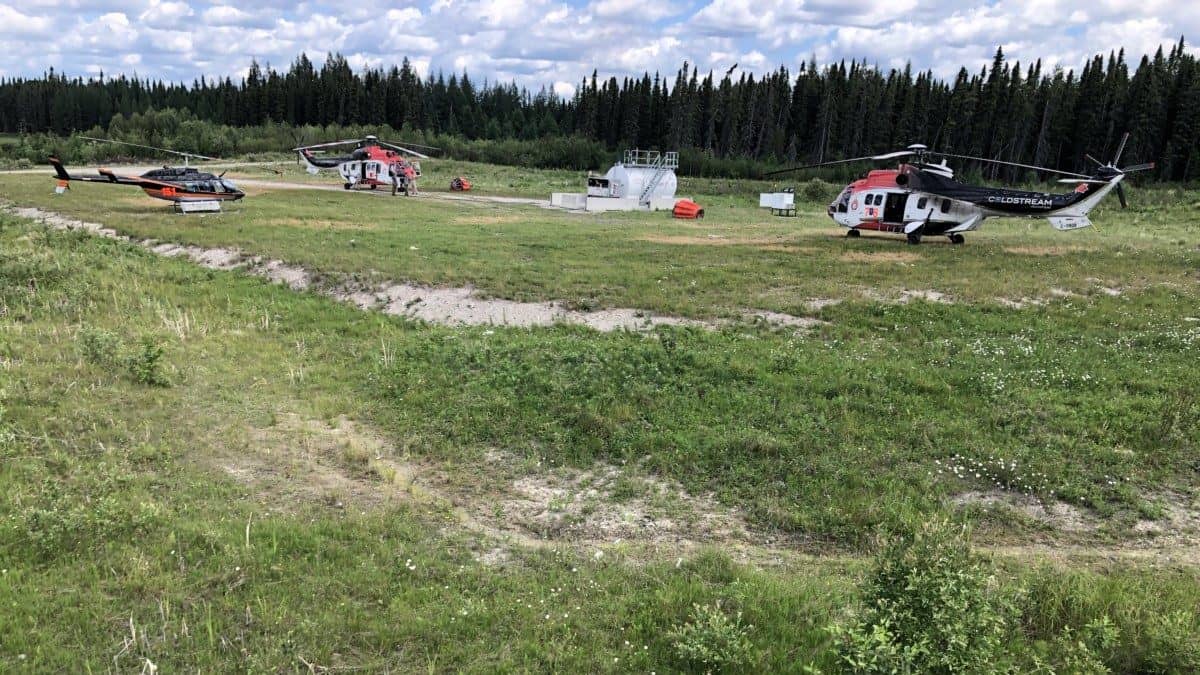
Fire Detection
During peak fire season helicopters can be used to scout areas looking for new fires. This is especially important after a thunderstorm has passed through. The pilot and an observer will fly over areas of concern looking for ‘Smokes’. This early detection allows the fire crews to quickly jump onto a small fire before it has the chance to build.
The other type of detection that helicopters are used for is thermal detection. When a fire appears to be extinguished small helicopters are sent up at first light with a thermal imaging camera and operator to scan the fire looking for hot spots. When any hot spots are found fires crews can be directed into those locations and deal with them. The root balls of fallen trees are usual culprits for hiding smolders!
This detection is limited to the first hour of sunrise because once the sun is up the ground soon heats up and makes it difficult for the thermal imaging cameras to display any contrast in heat. Because of this, drones are now gaining traction in their use to scan the fire during the night allowing for a full scan to be completed while it is cold.
Aerial Ignition
One way that fire crews use to try and get ahead of a fire is to purposely set lines of fire in the approaching path of the main fire. By doing these controlled burns they are able to burn up all of the fuel before the main fire gets there so once it does reach the line it can no longer spread.
Helicopters are used to create these lines of fire using two methods:
- Drip Torching
- Ignition Spheres
Drip Torching is using a barrel of gasoline/diesel slung under the helicopter that the pilot controls. When the predicated area is reached, a button press releases a stream of fuel from a valve which is then ignited to create a rain of fire. By controlling where this rain of fire is placed the pilot can create these controlled burn lines with the press of a button.
In the video below you can see the helicopter creating a prescribed burn line above the main fire. This is to prevent the fire from cresting and crossing the hilltop.
Ignition Spheres use a delivery device that is mounted inside the helicopter. The device has a hopper on top loaded with plastic spheres filled with Potassium Permanganate. When actived by the operator, the spheres drop down a chute where they are injected with glycol. This creates a chemical reaction that causes the sphere to catch fire approximately 20-30 seconds later.
The spheres drop from the chute, ignite then land on the ground creating the controlled line of burn.
Aerial Mapping & Surveying
To be able to accurately measure the size of a growing fire helicopters are used to fly the perimeter of the fire. While doing so the fire crew onboard will be recording the path flown with the GPS to ‘Draw’ the fires’ perimeter. This data is then sent back to the operations control center so new maps can be drawn up and distributed to all the fire crews, pilots, and management on a daily basis.
This mapping is usually done first thing in the morning before the management meetings so they have the latest data to be able to form their plan of attack for the day’s work. This is a job that the smaller helicopters like the Jet Ranger or Astar are usually tasked with.
To Finish
Helicopters are like any tool available to the forestry service, are used for what they are good at. By having a range of helicopters that are small and cheap to operate, all the way through to the large helicopters that can move lots of water or cargo, the wildfires can be attacked more efficiently.
The roles of the helicopters on the fire can be changed on an hourly basis that’s why flying a helicopter like the Astar is great fun as it can be used for ALL the roles mentioned above. Each day is different and working wildfires can be a very challenging but rewarding time.

